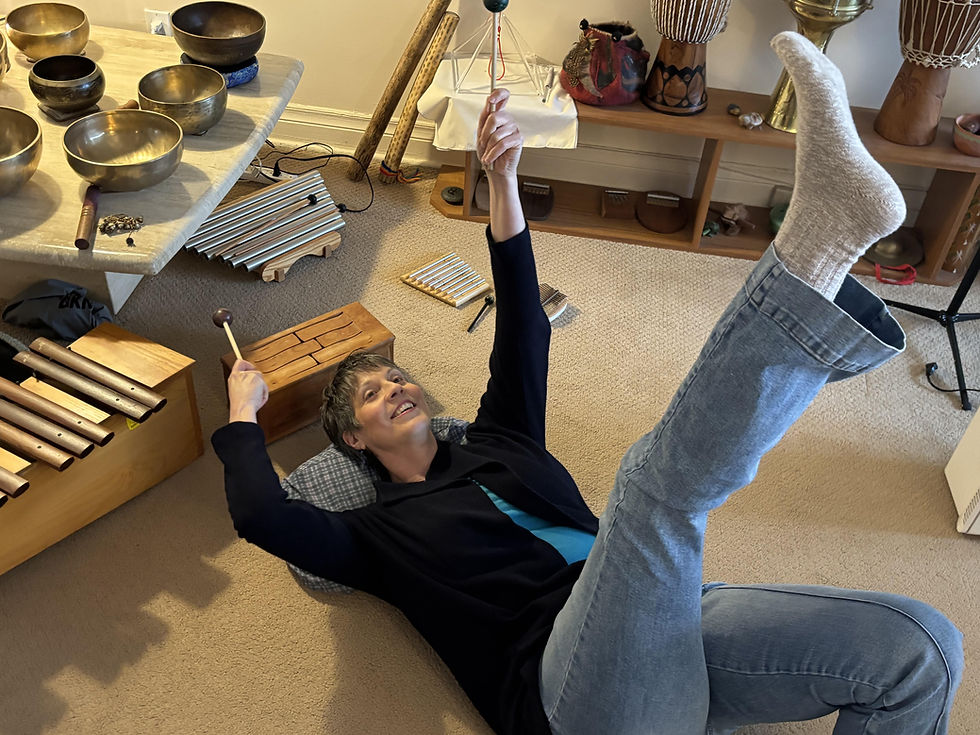Flexibility
- Irene Feher

- May 9
- 4 min read

The phrase "flexible body, flexible mind" reflects a core principle in yoga, emphasizing the interconnectedness of physical and mental well-being. Yoga, derived from the Sanskrit word "yuj" meaning "to yoke" or "to bind," originated in ancient India as a practice for spiritual growth and the connection between mind and body. The concept of flexibility extends beyond physical range of motion to encompass mental adaptability and openness to new experiences.
Mind/body practices are frequently used in musical practice to habilitate performers and prevent further injury. For example, The principles of the Taubman method for piano are rooted in the efficient use of the body's natural mechanics, ensuring that every motion is purposeful and ergonomic. Instead of relying on force or isolated movements, pianists are taught to use the interconnected systems of their arms, hands, and fingers. Other examples are the Alexander Technique and Feldenkrais Method, which are forms of neuromuscular reeducation that involve changing habitual movement patterns that may be of detriment to the player’s technical development and endurance.
As someone who is naturally clumsy, the practice of mindful movement through yoga, Qigong, Alexander Technique and Feldenkrais Method was life-altering for me.

The pursuit and maintaining of physical flexibility and smooth coordinated movements has been a particular challenge for me throughout my life, and after three decades of teaching, I know I am not alone. How these challenges manifest can be physiological, psychological, social and/or emotional. Thoughts and feelings are stored in our bodies. I tell my singing students that rigidity and fear hinders vocal freedom and that there is a big difference between effort and energy.
Enter improvisation, which opened up a whole new world of mindful musical practice and freedom.

Improvisational play with movement has helped me integrate body, mind and voice. I have watched instrumentalists’ movements become dynamic and relaxed over the course of an improv session.
I have found that improvising without concern about playing “wrong notes” allows me to explore different movement patterns that I may not dare otherwise try.
You too can engage in musical exploration with the attitude of “There are No Wrong Notes” and try different things such as:
Babbling with your voice at a super fast speed.
Babble into a wind instrument at a super fast speed
Wiggling all 10 fingers and then doing so on an instrument such as the piano or tapping on the strings of a guitar.
Play or sing a wild solo without fear of “wrong notes. Close your eyes as you do it.
Allow yourself to move your body with the music as you play or sing
Play with textures on your instrument by playing it in different ways, such as drumming on it, rubbing the strings or playing piano with your knuckles.
Try different mouth shapes when you sing
Sing through consonants to create interesting textures
This is not about undoing what you have practiced and learned, it is about expanding your musical imagination while freeing up your physical body. It’s about putting curiosity and play back into your music practice. It’s about mindful exploration.
Developing a flexible ear can happen when we embrace ALL notes as we play. We may discover new sound combinations. Improvising in different scales or modes is another great way to stretch the ear. Try improvising on some of the following: in a mode such as the dorian or locrian mode; 12 tone scales or rows such as those used by the Second Viennese School; octatonic scales that were heard in Russian music of the 20th Century; quarter tone scales such as those used in Middle Eastern Music; or, Japanese scales.
Listening to different styles of music or music you have never heard before is another beautiful way of opening your ears and mind.
Choose a song you love and play or sing it in a completely different way that you might otherwise dare to. For example: change the melody and keep the rhythm, sing it in a completely different feel/ speed, or choose one line and improvise on it.
I will leave you with a wonderful playlist that was assembled at our last online class of EuSing! I asked participants to share songs that bring them joy - we then improvised on some of them! Enjoy exploring!
EuSing! Joy Playlist for May 2025!
Why We Sing by Greg Gilpin
Mountains Win Again by Blues Traveler
Naïve Melody by the Talking Heads
Tropicalia by Beck
Hit the Road Jack by Percy Mayfield
Viva La Vida by Coldplay
La Bamba by Ritchie Valenz
You’ve got a friend by James Taylor
Harvest Moon by Neil Young
One Voice by The Wailin’ Jennys
Cecilia by Paul Simon
Blackbird by Paul McCartney
Do-Re-Mi (from the Sound of Music) by Richard Rogers
Anything by Jason Isbell
The Wild Rover (No, Nay, Never) by the Irish Rovers
Flashdance by Irene Cara
Mr Tambourine Man by the Byrds
How high by the Record Company
Shakedown by Valerie June
Things have Changed by Bob Dylan
Sweet Caroline by Neil Diamond
Hallelujah by Leonard Cohen
Let It Be by John Lennon
Sound of Music (from the Sound of Music) by Richard Rogers
Blame it on the Boogie - Jackson 5
Sittin’ on the Dock of the Bay - Otis Redding
Brown Eyed Girl - Van Morrison



